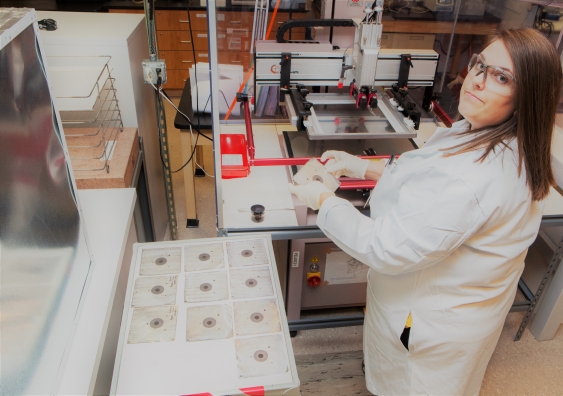
Brisbane start up Printed Energy is receiving government funding to further development of its screen printed batteries.
The money comes as part of a $7.5m initiative to fund research for advancing power storage technology.
Printed Energy’s research, in partnership with the University of New South Wales (UNSW) and the University of Queensland, falls within one of two major initiatives receiving the backing. It is associated with the new Australian Research Council (Arc) Research Hub at UNSW, which will be getting $3.1m under the scheme, for printed batteries and other storage technologies in the works.
The batteries are produced with roll-to-roll presses, in a thin, flexible format, which Printed Energy says can be adapted to almost any shape, with potential applications including powering smart cards and wearable devices, to large scale solar panels and energy storage.
Josh Frydenberg, Minister for the Environment and Energy says, “We know the huge importance of energy storage, especially into the future as our energy sector continues to transition.
“I expect researchers to work with the energy sector to progress innovations in energy storage technologies such as printed batteries, structural supercapacitors, fuel cells and power-togas systems.
“Working closely with industry this Hub will at the forefront of developing more cost effective energy storage solutions that also allow for better integration into the future energy grid."
[Related: Australian Paper looks to energy from landfill]
Roger Whitby, CEO of Printed Energy says, “The highly innovative nature of this technology makes it ideal for powering sensors, devices, disposable healthcare devices and eventually, even for large-scale application to help manage the intermittent nature of electricity generated by solar panels.”
Under the project, UNSW says first applications of the technology are being made in small-scale devices, with development to come for large scale use over the next two years, depending on Printed Energy’s proprietary designs.
Other energy technologies using existing printers are already in development. Earlier this year, the University of Newcastle made its first commercial instalment of its printed solar panels for CHEP.
Chris Greig, director of UQ’s Dow Centre for Sustainable Engineering Innovation and the UQ Energy Initiative says, “Australia has seen a decline in manufacturing industries in recent decades. This technology represents not just an opportunity for us to be involved in cutting-edge science and innovation but presents a real opportunity for the next generation of Australian manufacturing.
“Our mission is to foster and facilitate advances in science and engineering which are technologically, economically and socially sustainable. This project fits the bill perfectly and the range of applications is probably only limited by our imaginations.”
The energy storage funding forms part of the government’s funding for 132 new research investments, led by Australian universities. As part of the scheme, the government is also providing $4.4m to a specialist Training Centre at Deakin University to train new researchers in the energy sector.
Frydenberg says, “With the change in electricity generation, there is also the need for advancements in energy storage and its continued integration, and this Hub will at the heart of this.”
Comment below to have your say on this story.
If you have a news story or tip-off, get in touch at editorial@sprinter.com.au.
Sign up to the Sprinter newsletter

